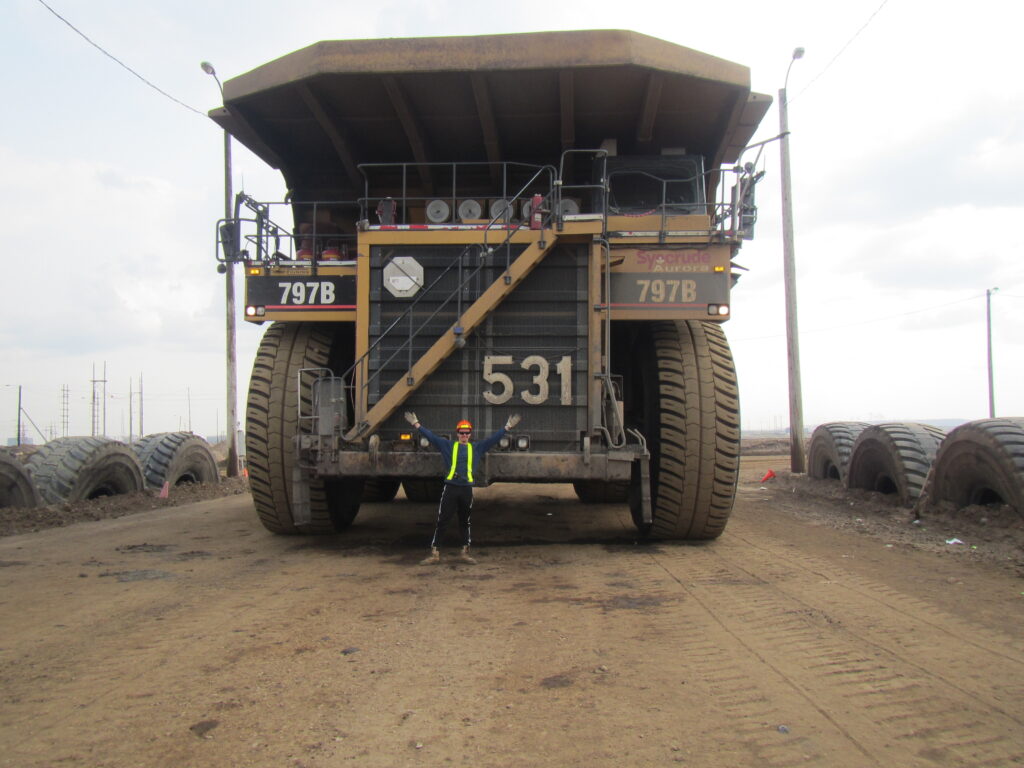
When you mention “mining” to most people, they’ll automatically conjure images of coverall-clad crews wearing hard hats, driving dump trucks and extracting ore from hundreds of metres below the Earth’s surface.
That’s all accurate, however, while understanding how we mine metals is essential, it is also important to have experts who know how to analyze the value of a company and the minerals being uncovered.
That’s where mining finance professionals such as University of Toronto Alumnus Denis Lantsov come in.
Lantsov (Min 1T8+PEY) is an Investment Banking Analyst in RBC’s Metals and Mining division and formerly worked on the Metals and Mining Equity Research team at BMO where he assisted in covering large-cap Canadian listed gold and base metal producers. The U of T alumnus uses the knowledge he gained from the Lassonde Mineral Engineering program to valuate projects from a technical and financial perspective. Right now, he works in the heart of Toronto’s financial district, but Lanstov credits his practical background in the field and in the classrooms at U of T for all his career success.
“My technical experience was so important and what I learned served as a good foundation for understanding what’s being published in the company reports I’m interpreting. Engineering knowledge has been a necessary complement to my financial skills.”
Lanstov’s interest in the mining field was already piqued by the time he started university, having grown up with family members working in the lucrative oil and gas industries.
The fact that there are so many avenues you can choose from was very appealing to him and his desire was cemented through a summer internship experience working for Franco-Nevada Corp., the leading precious metals royalty and streaming company.
“Working in mining, you can travel to remote locations or work in big cities. You can crunch numbers at a desk 20-storeys in the air or grind it out in a mine hundreds of metres underground. There are so many options, but as I completed more courses at U of T, I realized the financial side of things was my true calling.”
Recalling his LME studies, Lanstov points to a few courses for anybody interested in pursuing a similar career path post-graduation.
He says JRE300 Fundamentals of Accounting and Finance was a great introduction and MIN350 Mineral Economics taught him about valuing mining companies while offering a primer on royalty and streaming agreements.
The alumnus also says anybody interested in pursuing the finance stream should consider joining the U of T Engineering Finance Association (UTEFA) to hone their stock valuation skills.
“We’d get up on a stage to practice pitching companies and talk about why we think it’s a good buy, and then we’d have a competition to see whose stock picks were the best.
According to Lantsov, there’s never been a better time to jump into the industry. A labour shortage combined with commodity prices at an all-time high means there’s no shortage of opportunity for new graduates.
And of course, there’s an added competitive advantage when you come from U of T.
“The best thing about being on the St. George Campus is that you’re located in Toronto, which is a global hub of mining finance, and many companies have their head offices based here.”
All this to say, Lantsov stresses you can’t underestimate the power of networking to enhance your education and jumpstart your career.
He recommends reaching out to people on LinkedIn or Engineering CONNECT. Lanstov also suggests taking advantage of events held by The Canadian Institute of Mining as well as the Prospectors & Developers Association of Canada (PDAC) convention happening this June.
“I find that U of T students are breaking into the industry with relative ease compared to other schools because a lot of alumni are already working there. In fact, tapping into that network is how I got my first job.”
By David Goldberg